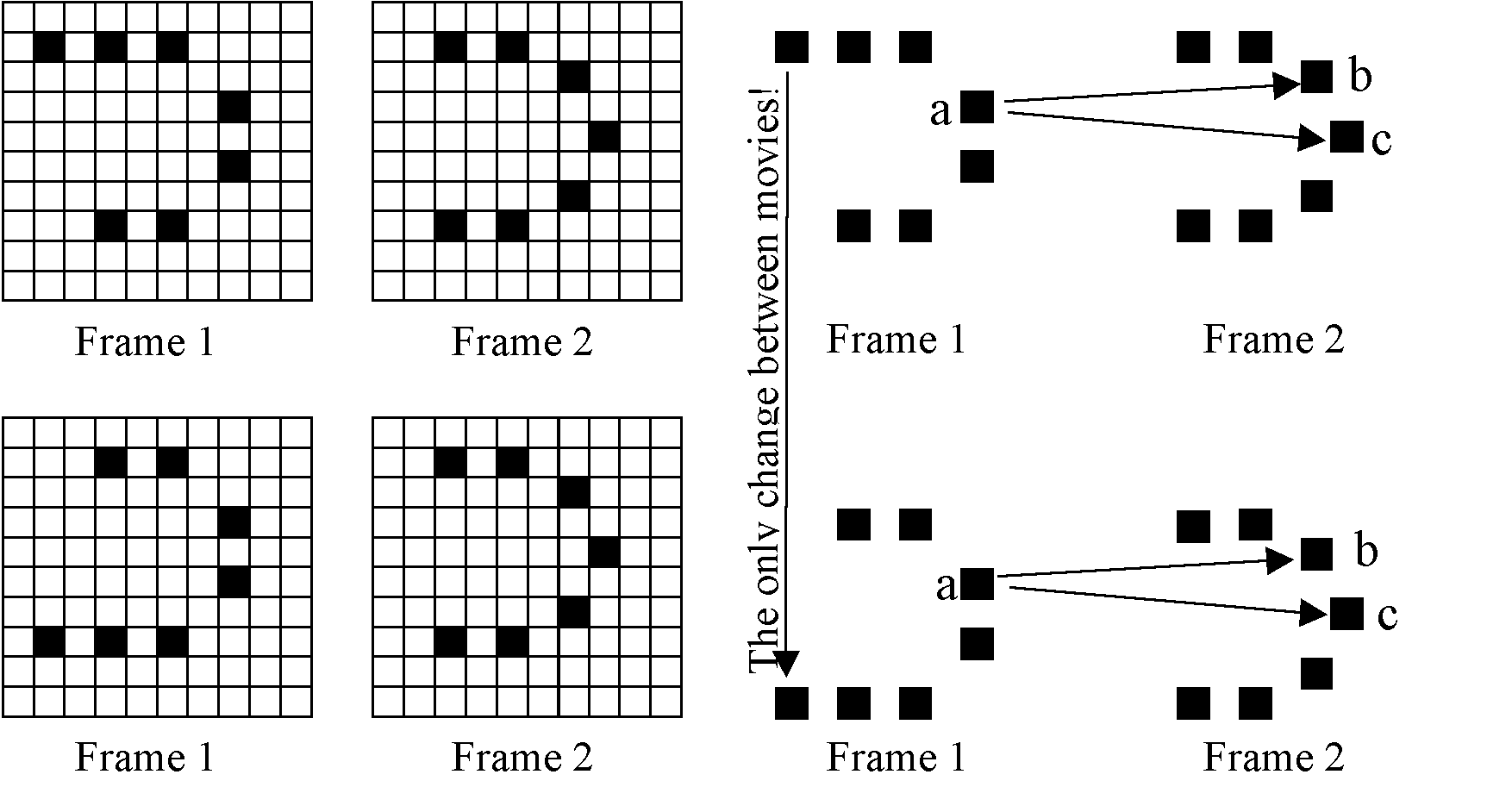
When assessing your own subjective experience of apparent motion, not only are
the correspondences between elements across frames relevant, but the strength/goodness
of motion and its resistance to change should also be considered. In answering
the following questions, try exposing yourself (and friends) to the same display
a number of times and base your answers on the most frequent interpretation
given.
1. Create the two movies (only use the grid lines to help you in creating the
frames, not when running the animation):

When designing the frames, you may want to have “grid on” but when
looking at the animation, have “grid off.” There is only one difference
between Movies 1 and 2, and it involves the square on the left that moves from
top to bottom in Frame 1. Run the animation with a fairly long duration and
a fairly short blank interval, and wait until a stable, coherent perception
of movement develops. As the animation runs, ask yourself or a friend whether
the square marked “a” in Frame 1 corresponds to “b”
or “c” from Frame 2 – that is, whether “a” looks
like it moves up to point “b”, or down to point “c”.
Do you find that “a” corresponds to different squares in Movie 1
and Movie 2? Is your answer consistent or inconsistent with what you would expect
by a one-to-one mapping constraint? WHY?
2. Create the two frames:
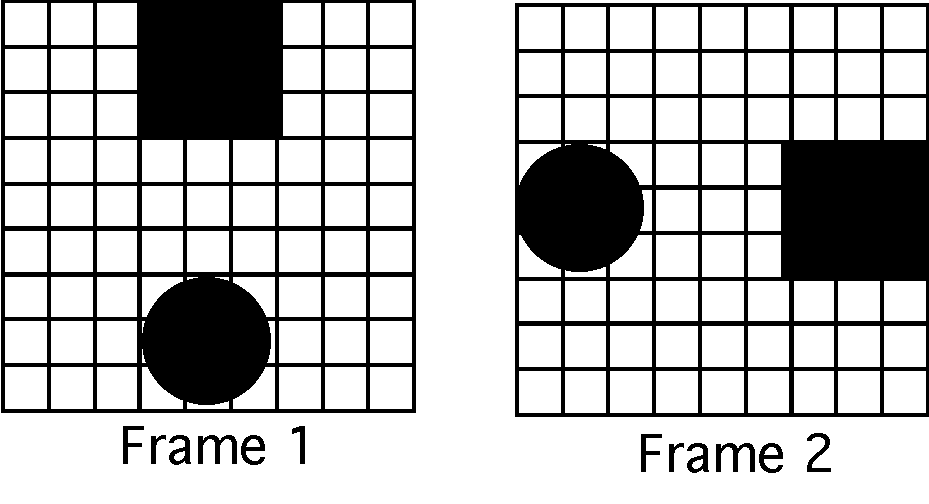
A. When you animate these frames in such a way that you see motion, what do
you see? What does this suggest about whether SHAPE influences apparent motion?
WHY?
Now create the two frames:
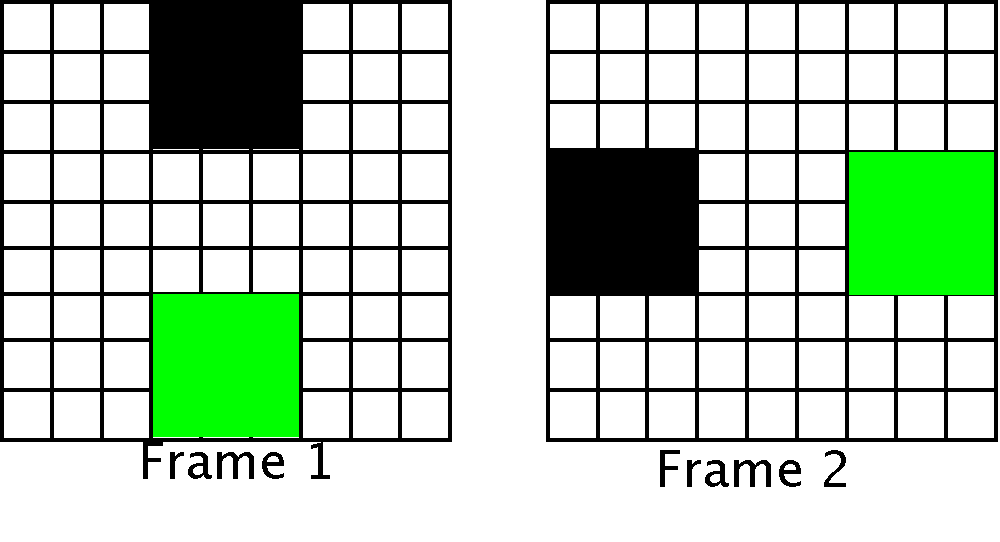
B. When you animate these frames in such a way that you see motion, what do
you see? What does this suggest about whether color influences apparent motion?
WHY?
C. Now, create a display that tests whether COLOR (green versus red) or SHAPE
(square versus circle) is MORE important for determining motion. Draw a picture
of your two frames. What do you see, and what do you conclude from your perception
about which is more important?
3. When people see the figure
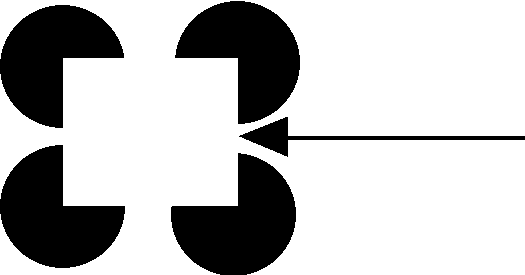
they often see it as a white square on top of four black circles. They see “solid”
white lines making up the square, even though in parts of the figure such as
the part pointed to by the arrow, there is no real line contour there. Both
sides are white! In fact, there is no square at all, but only four pac-man like
shapes. The perception of solid contour lines and the square is a called an
“illusory contour.” Create the following frames:
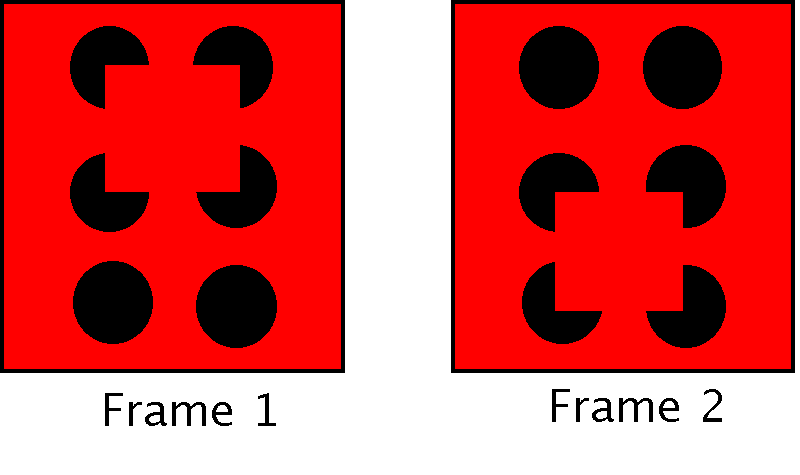
To create these frames, first create one LARGE red square in Frame 1 to serve
as the background color, and copy this square to Frame 2. Second, create six
MEDIUM black circles as arranged above and positioned on top of the red square,
and copy them to Frame 2. Third, create one Medium red square and move it on
top of four circles as shown in Frame 1, and then copy it to Frame 2, and move
the red square down to its proper position in Frame 2. Or, alternatively, the
easiest way to make the illusory squares frames is to use the load
button to load in the file "Illusory squares" which can be downloaded
from http://cognitrn.psych.indiana.edu/rgoldsto/courses/illusorysquares.txt
Using 0 for the blank time, what do you see when you make this movie? What does
your perception imply about whether your mind creates illusory contours BEFORE
or AFTER it creates apparent motion? What would you have seen if illusory contours
were only constructed after apparent motions were determined? What would have
you have seen if apparent motions were determined only after illusory contours
were created?